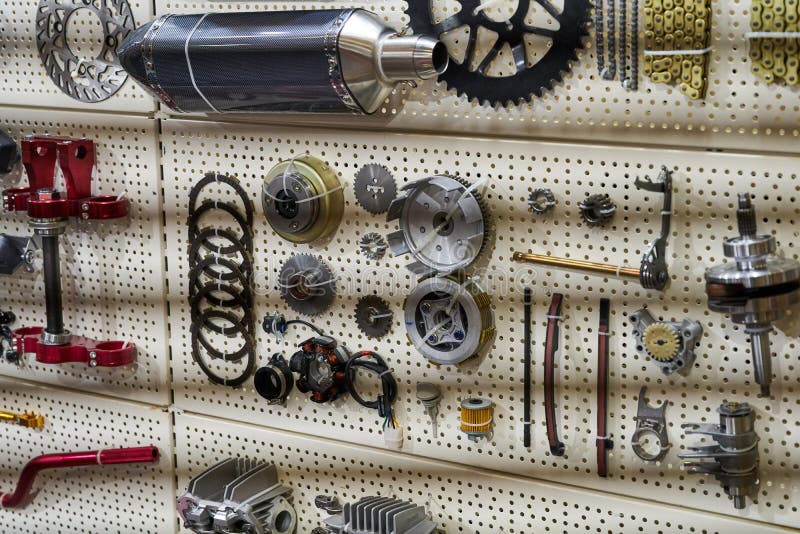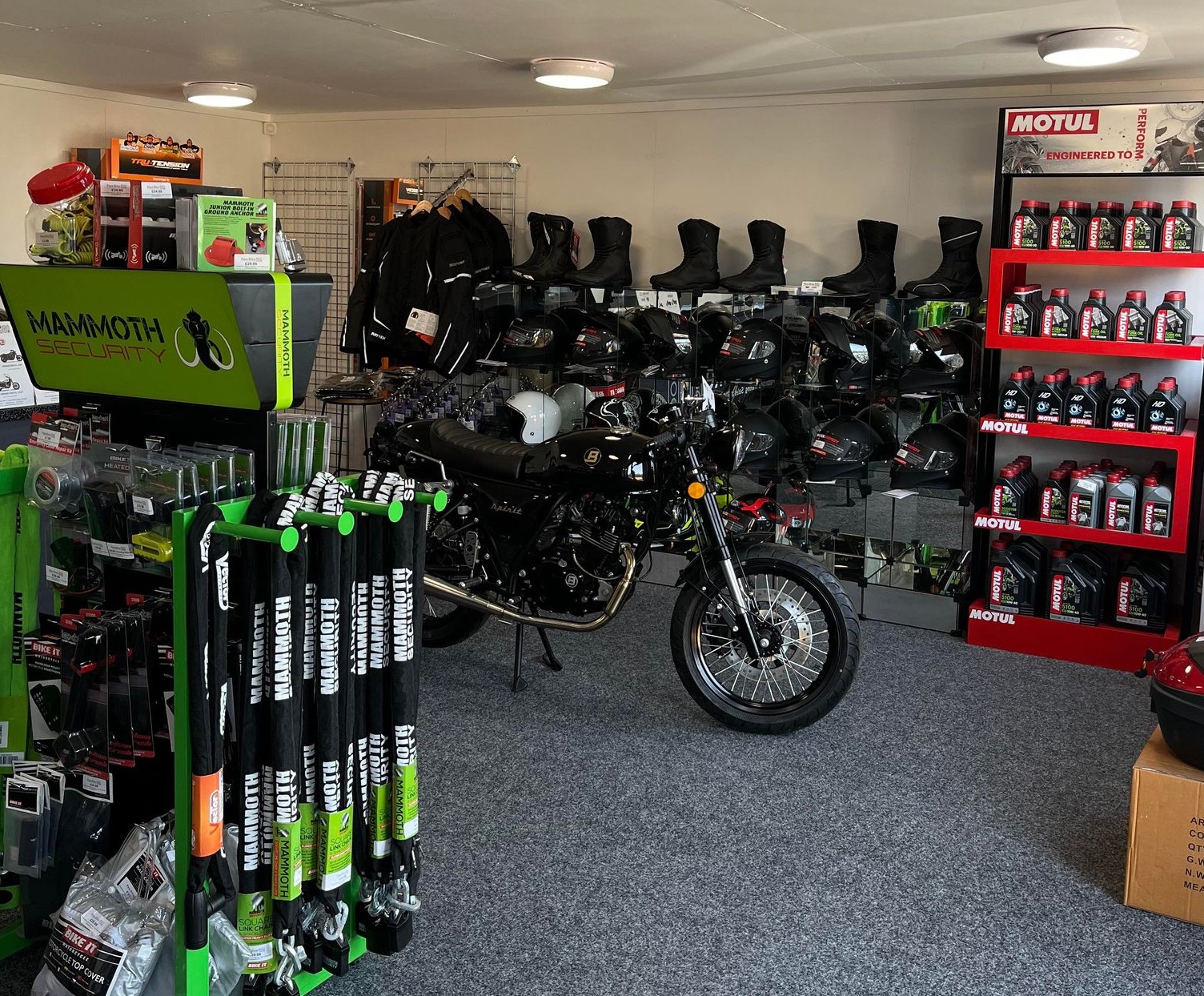Essential Motorcycle Parts NZ for Peak Performance and Safety And Security
Essential Motorcycle Parts NZ for Peak Performance and Safety And Security
Blog Article
Understanding the Important Parts of a Motorbike: A Comprehensive Overview for Lovers
For motorbike fanatics looking to boost their riding experience and ensure their bikes run efficiently, understanding the necessary parts of a motorcycle is paramount. Each component, from the engine's intricate workings to the important duty of the braking mechanisms, not only impacts performance but also safety and convenience.
Engine Elements

The camshaft plays a critical function in controlling the timing of the engine's shutoffs, ensuring the accurate opening and closing necessary for effective fuel and air consumption, in addition to exhaust expulsion. This timing is crucial to keeping ideal engine performance and efficiency. In addition, the carburetor or gas shot system, depending upon the motorcycle design, is accountable for mixing air with gas in the appropriate proportion for combustion.
The air conditioning system, either air or liquid-based, functions to preserve the engine's temperature level within operational restrictions, stopping overheating and making certain durability - motorcycle shop. Each element, diligently developed and integrated, adds to the seamless operation of the engine, specifying the motorbike's power output and general performance
Transmission System
Integral to the bike's capability, the transmission system guarantees effective power transfer from the engine to the wheels. This system makes up a number of essential parts, including the clutch, transmission, and final drive, each playing an essential duty in equating the engine's power right into movement. The clutch, commonly operated by a hand bar, offers to disengage the engine and engage from the transmission, enabling smooth gear adjustments and regulated velocity.
The transmission, frequently described as the transmission correct, contains a set of equipments that cyclists can by hand change via to change the bike's rate and torque output. These gears are set up in a series that enables the motorbike to accelerate smoothly and maintain optimal engine performance across various rates. Most bikes make use of a sequential gearbox, requiring the rider to change gears in a predetermined order.
Braking Mechanisms
While comprehending the transmission system is essential to taking advantage of a bike's power, equally vital is the capacity to control and quit that power effectively, which is where stopping mechanisms enter into play. Brakes are vital for security and performance, offering the cyclist with the essential control to navigate various terrains and conditions. Typically, bikes feature two sorts of braking systems: disc brakes and drum brakes.
Disc brakes are more widespread in contemporary motorcycles due company website to their superior performance. They include a brake disc, caliper, and pads. When triggered, the caliper presses the brake pads against the rotating disc, transforming kinetic energy into warmth, thereby reducing the wheel. This system offers far better warmth dissipation, constant efficiency, and improved stopping power, especially in damp conditions.
Conversely, drum brakes, though much less typical, are still discovered in some bikes. They work by pressing brake footwear against the inner surface of a drum connected to the wheel. While typically less reliable in heat dissipation and stopping power, drum brakes are easier and much more cost-efficient.
Understanding these stopping systems' nuances allows bikers to keep their motorcycles correctly and value the engineering that makes sure safe and reliable stopping.
Suspension and Guiding
Suspension and guiding systems are vital parts that dramatically influence a motorcycle's handling and experience comfort. The suspension system, containing forks at the front and shock absorbers at the rear, soaks up road irregularities, enhancing stability and control. Front forks, commonly telescopic or inverted, compress and rebound to reduce effects, while back shock absorbers keep tire contact with the road, essential for traction and safety.
Steering, centered around the handlebars, links the motorcyclist to the motorcycle's directional control. The guiding head bearings make certain smooth operation, allowing precise ability to move. Proper alignment and upkeep of these bearings are critical for foreseeable guiding reaction and decreasing biker exhaustion.
The suspension's adjustability is an additional critical aspect; preload, damping, and rebound setups permit customization to suit numerous riding conditions and styles. This versatility is important for maximizing performance, whether browsing metropolitan streets or tackling rugged routes. Advancements like digital shock absorber provide real-time adjustments, boosting ride high quality throughout varied surfaces.

Electrical Systems
After guaranteeing a controlled and smooth adventure with effective suspension and guiding systems, attention turns to the click here for info electrical systems, a critical aspect of contemporary motorbikes. These systems play an important role not only in starting the engine yet likewise in powering various components that improve the capability and security of the motorcycle.
At the heart of a bike's electric system is the battery, which shops electrical power required for beginning the engine and powering auxiliary systems - motocross parts nz. The generator or generator, combined with the rectifier-regulator, makes certain the battery continues to be charged while the bike is in procedure, transforming mechanical power right into electric power and keeping voltage levels
The ignition system, one more essential element, is responsible for sparking the air-fuel mix in the engine's cylinders. Modern motorcycles typically use a digital ignition system, offering greater efficiency and reliability contrasted to typical systems.
Lights systems, consisting of fronts lights, tail lights, and indicators, are also crucial, making certain visibility and safety for the biker. Extra digital elements such as sensors, control units, and displays add to innovative features like gas shot administration, anti-lock stopping systems (ABS), and electronic control panels, additionally improving the riding experience.
Conclusion
A comprehensive understanding of a motorcycle's necessary elements, consisting of the engine, transmission system, braking mechanisms, suspension, guiding, and electrical systems, is indispensable for fanatics aiming to maximize efficiency, comfort, and safety and security. Mastery of these components enables informed decisions regarding upkeep and upgrades, eventually boosting the riding experience. By integrating this knowledge, bikers can guarantee their bikes run at peak effectiveness and dependability, therefore making the most of both satisfaction and longevity of their lorries.
For motorbike enthusiasts looking to elevate their riding experience and guarantee their bikes run efficiently, recognizing the crucial parts of a bike is paramount.Integral to the motorbike's functionality, the transmission system guarantees reliable power transfer from the engine to the wheels.While comprehending the transmission system is vital to taking advantage of a bike's power, equally essential is the capability to control and quit that power efficiently, which is where braking mechanisms come right into play. Commonly, motorcycles feature two kinds of braking systems: disc brakes and drum brakes.
A complete comprehension of a motorcycle's essential parts, consisting of the engine, transmission system, stopping devices, suspension, guiding, and electrical systems, is crucial for enthusiasts aiming to optimize comfort, efficiency, and safety and thin heated motorcycle gloves security.
Report this page